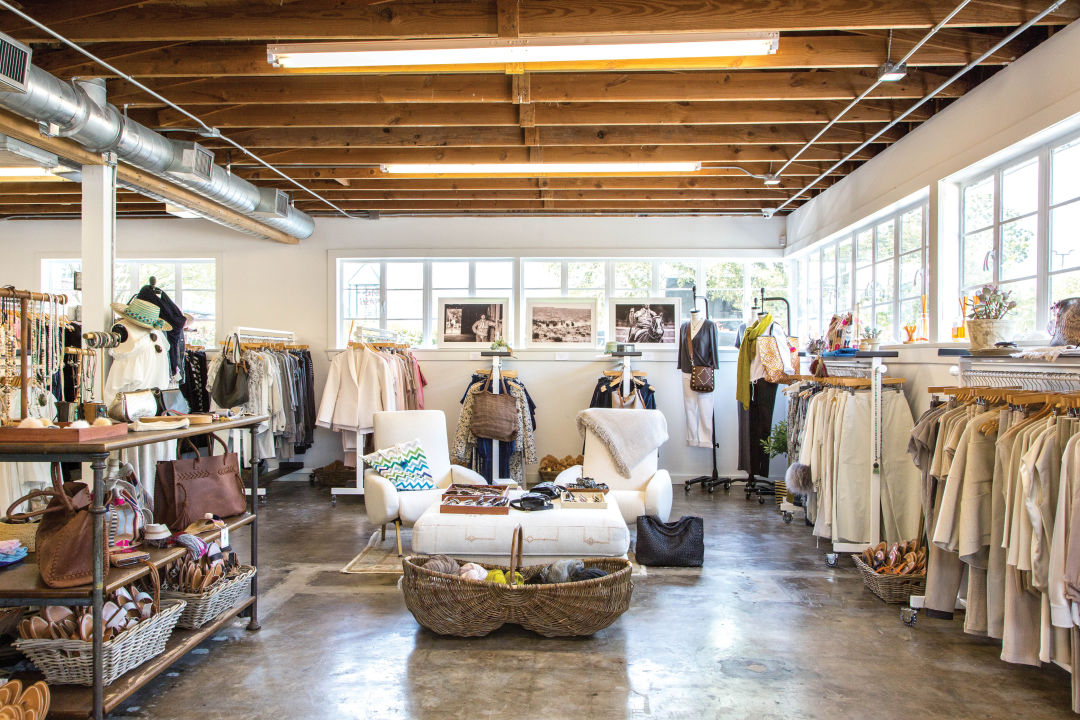Checking Out the Development and Influence of Garments on Modern Style Trends
The development of apparel has actually significantly affected modern fashion fads, combining historic criteria with cutting-edge developments. Iconic numbers like Coco Chanel and Yves Saint Laurent revolutionized the fashion industry by presenting ideas that focus on comfort and availability, which continue to reverberate today.
Historical Style Influencers
In the tapestry of style history, certain figures have actually left an indelible mark, forming the fads and styles that specify entire ages. Coco Chanel, a cutting edge developer, redefined ladies's fashion by introducing comfy, classy garments that left from limiting bodices. Her legendary Chanel suit and little black outfit have actually come to be timeless staples in wardrobes worldwide. Christian Dior's post-war "New Look" in 1947, with its party of womanhood with complete skirts and cinched waists, marked a return to luxury and has continued to affect designers.
Elsa Schiaparelli is another critical figure, renowned for her avant-garde layouts that included surrealist art, collaborating with Salvador Dalí to produce whimsical pieces that challenged traditional aesthetic appeals. Her cutting-edge use shade and strong patterns reverberates in modern style. Yves Saint Laurent, meanwhile, democratized haute couture with prêt-à-porter collections, bringing path designs to the masses and setting a precedent for contemporary ready-to-wear lines.
These visionaries, among others, not just revolutionized style in their times yet additionally set sustaining trends that resonate in today's fashion business, providing a foundation upon which modern-day designers remain to develop and introduce. Their heritages underscore the value of creative thinking and daring in vogue's ever-evolving narrative.
Technological Innovations in Style
Among the dynamic landscape of the fashion business, technological improvements stand at the center of advancement, reshaping just how developers produce and customers engage with style. The combination of 3D printing has transformed design processes, allowing developers to explore intricate frameworks and lasting products that were formerly unthinkable. This modern technology helps with rapid prototyping, decreasing waste and speeding up manufacturing times.

Smart textiles, embedding modern technology into fabrics, are likewise transforming the sector. Innovations like self-cleaning and temperature-regulating textiles provide enhanced capability and convenience. Wearable innovation, integrating features like fitness tracking and interaction, includes a brand-new measurement to style, combining aesthetic appeals with practicality.
Cultural Shifts and Style
As technical improvements remain to improve the fashion industry, social shifts are just as significant, redefining design and customer preferences. Over the last few years, the surge of social networks systems has actually accelerated the dissemination of worldwide fashion trends, permitting varied cultural impacts to converge and coexist. This digital interconnectivity has actually assisted in the quick exchange of concepts, you could try this out causing a much more inclusive and eclectic analysis of design that reflects the multifaceted nature of contemporary society.
Social understanding and appreciation have prompted designers to draw ideas from a wider range of historic and ethnic contexts, incorporating conventional themes with modern aesthetics. This fusion has caused fashion that resonates with a larger audience, advertising a feeling of identification and belonging across various demographics. In addition, the boosting need for personalization has driven brand names to offer personalized alternatives, enabling customers to reveal originality while showing their social heritage.
Moreover, moving societal worths have actually affected style, with inclusivity and variety becoming main themes. The market has started to embrace versions and influencers of various type of body, ethnicities, and sex identities, challenging traditional appeal requirements. This change underscores the power of cultural changes in forming the future of fashion, as style ends up being a more authentic expression of personal and collective identification.
Sustainability and Modern Layout
While the fashion industry continues to develop, the crucial for sustainability has come to be progressively immediate, influencing contemporary style techniques. The surge of slow style, which stresses high quality over amount, encourages customers to spend in timeless items rather than transient patterns.
Moreover, modern-day design is identified by its innovation in minimizing waste and promoting circularity. This method not just mitigates environmental impact yet additionally boosts the social responsibility of style homes.

Future Trends in Style

Sustainability will continue to be a driving force in shaping future style trends. The sector is increasingly embracing environmentally friendly products and ethical production methods, responding to an expanding customer demand for liable practices. Advancements such as bio-fabricated materials and closed-loop recycling systems are set to redefine just how clothing is generated and taken in, minimizing environmental impact while maintaining style and top quality.
Social changes, including the rise of inclusivity and variety, will also play about his a pivotal function. As society comes to be much more mindful of social issues, style is expected to come to be a platform for expression and modification. Designers will likely concentrate on producing collections that mirror a wider series of experiences and identities, championing depiction and access.
Conclusion
The development of clothing considerably impacts contemporary fashion patterns, where historic impacts combine with contemporary layouts. Key numbers like Coco Chanel and Yves Saint Laurent have redefined style, while technical technologies such as 3D printing and clever textiles expand creative possibilities. Social changes in the direction of inclusivity and sustainability urge brands to embrace ethical techniques and embrace variety. This continuous advancement emphasizes fashion's function as a mirror to societal worths and technological advancement, suggesting a future abundant with development and inclusivity.
The advancement of garments has actually substantially affected contemporary fashion trends, combining historic criteria with advanced developments.Amidst straight from the source the vibrant landscape of the style market, technological advancements stand at the center of technology, improving exactly how designers develop and customers engage with style.While the style industry proceeds to advance, the important for sustainability has come to be progressively urgent, affecting contemporary design techniques. As sustainability ends up being embedded in modern-day style, it paves the means for a more mindful and liable style industry.
The advancement of clothes significantly influences modern style trends, where historic influences combine with contemporary layouts.